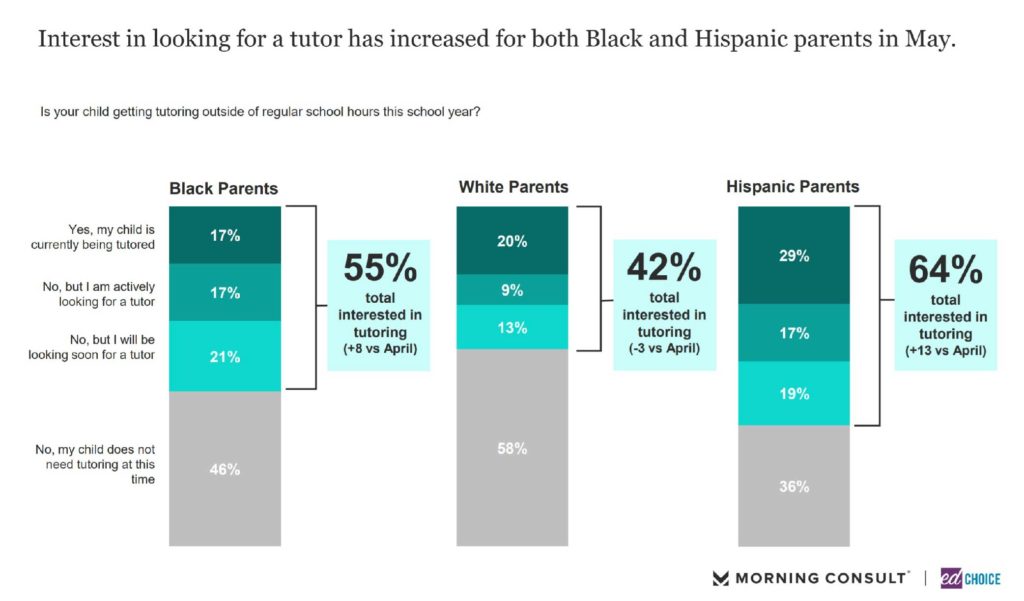Public Opinion Tracker Deep Dive: Black K-12 Parent Perspectives (May 2021)
The first half of 2021 saw many children return to the classroom, and there have been numerous reports detailing their struggles with learning loss. Districts have faced difficult decisions about testing and how to spend massive injections of federal funds. State legislatures across the country have passed historic improvements in school choice options for families. It’s been well documented that Black families have had different experiences than white and Hispanic families during COVID-19 and the resulting educational fallout. To find out more about those experiences, we began oversampling Black families in February 2021 to learn more about their unique schooling perspectives, concerns, and preferences as part of our monthly survey work.
Each month, we poll a nationally representative sample of American adults aged 18 and over. Our May 2021 survey was in the field May 7-20 and received responses from 2,200 people. Between May 7 and June 2, we surveyed 437 Black parents of school-aged children, which includes an oversampling of 300 Black parents. We also obtained survey responses from a nationally representative sample of 1,166 K-12 school parents, which includes an oversampling of 700 school parents.
1. The vast majority of Black parents continue to support three major school choice policies. More than seven out of 10 Black parents indicate some or strong support for education savings accounts (ESAs), school vouchers, and public charter schools. Specifically, 74 percent support ESAs (-6 percentage points from April), 80 percent support school vouchers (-1 point from April), and 72 percent support public charter schools (-2 points from April).
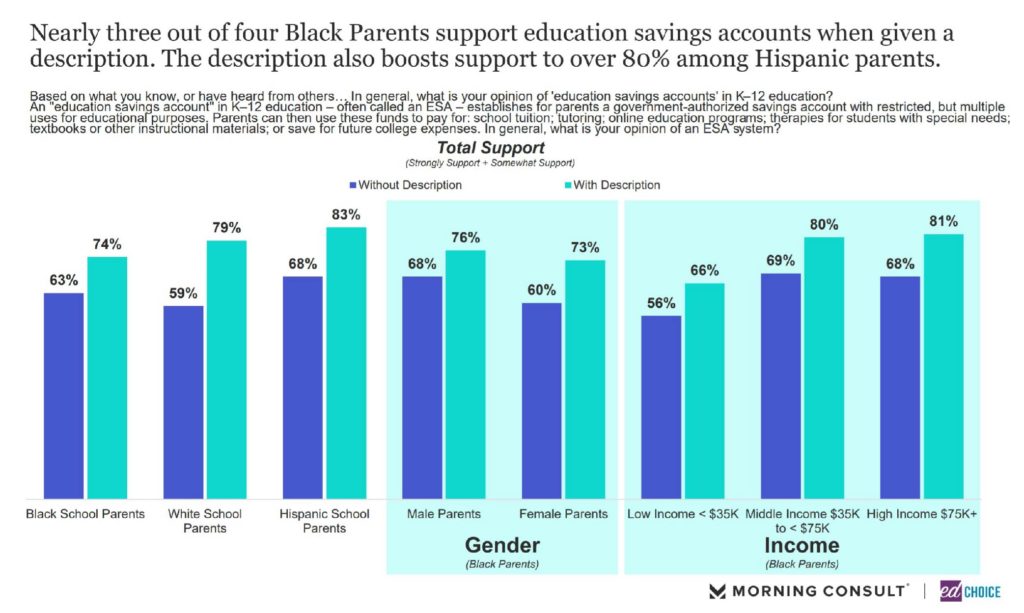
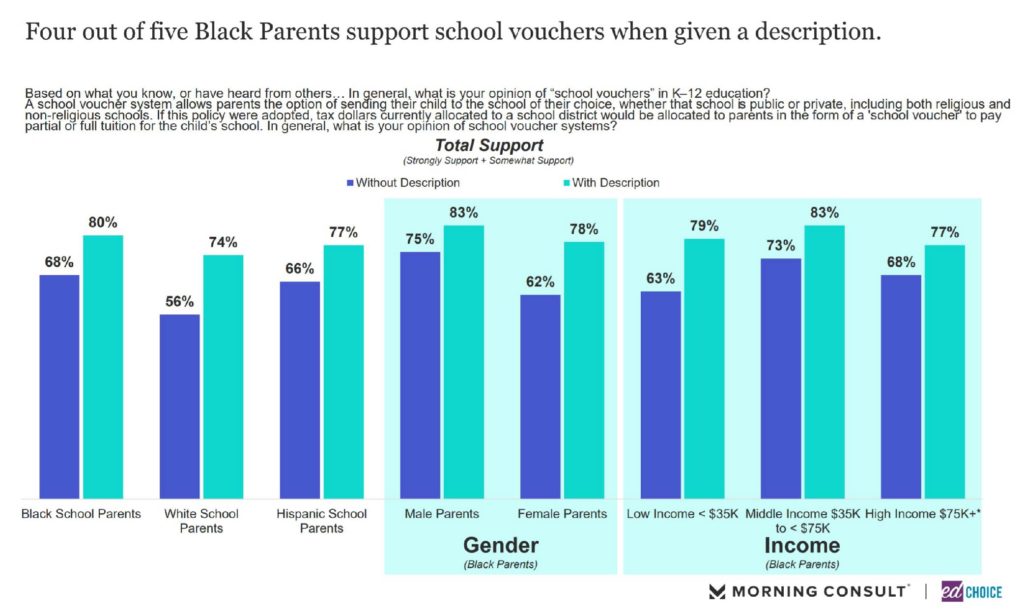
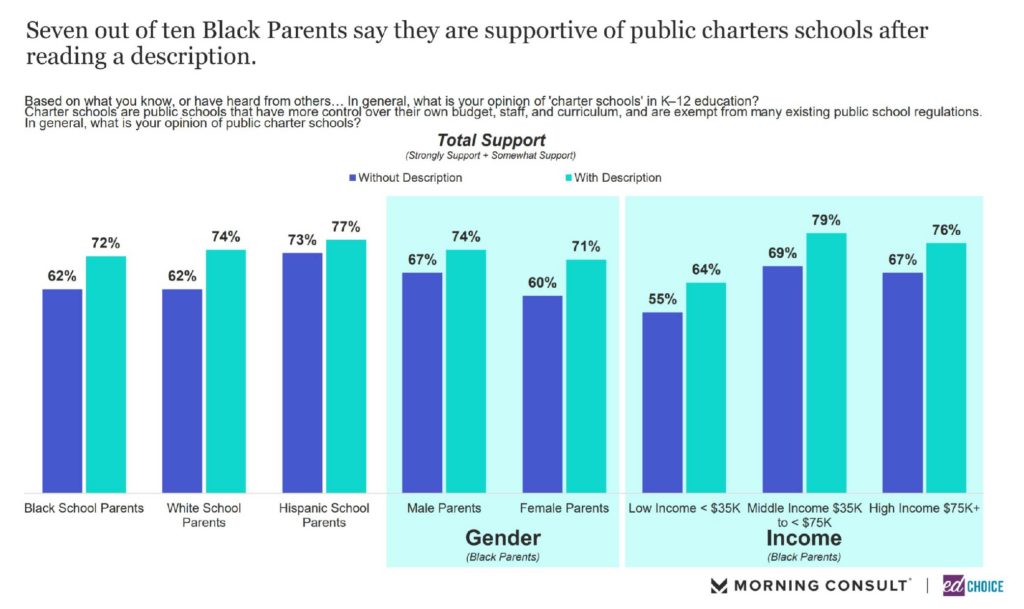
2. Black parents have grown slightly more comfortable returning to in-person education, and the gap in comfort levels between Black parents and white and Hispanic parents has narrowed. Back in February, when we first obtained an oversampling of surveys from Black parents, just 36 percent of them were at least somewhat comfortable with their children returning to the classroom, 18 percentage points lower than white parents and 15 points lower than Hispanic parents. This month, Black parents’ comfort with in-person education increased to 55 percent, which was 13 points lower than white parents and eight points lower than Hispanic parents.
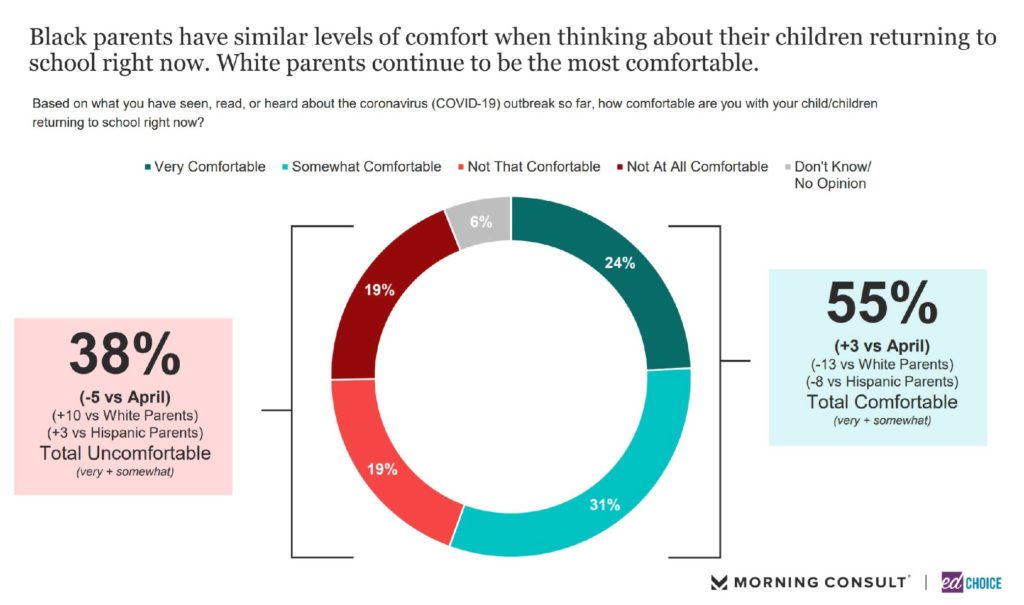
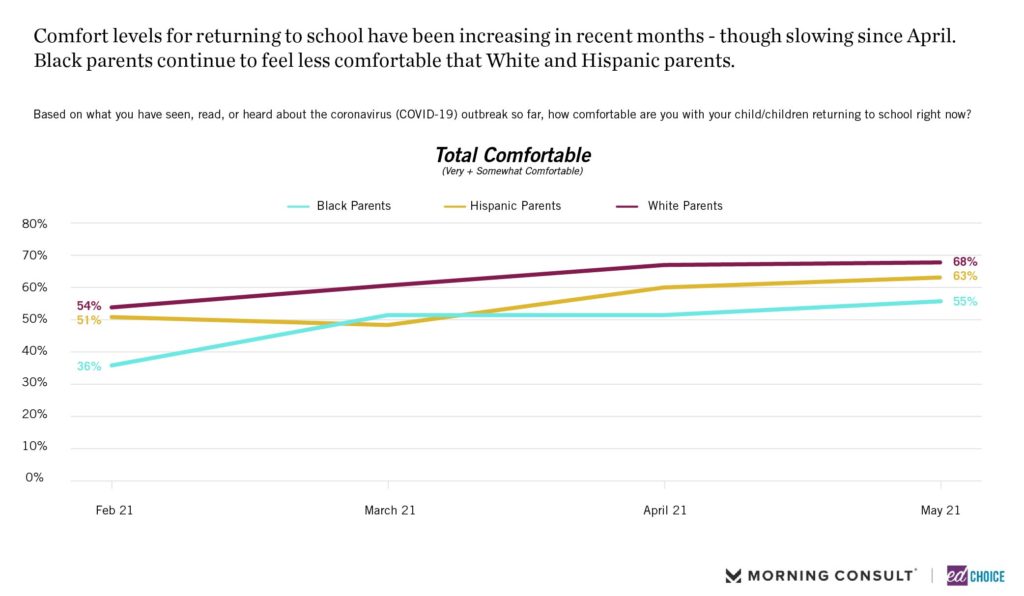
3. Black parents remain more optimistic about the impact various resources can have on children’s academic outcomes next school year. We listed eight resources schools potentially could offer to help children learn better in school year 2021-2022. With the exception of longer school days, the majority of Black parents thought each option would be very or extremely helpful. Laptops, tutoring, individualized learning plans, high-speed internet, and mental health services were especially popular, with more than 70 percent of Black parents indicating those resources would be at least very helpful. With the exception of weekend school days, Black parents are more positive about the helpfulness of these resources than both white and Hispanic parents.
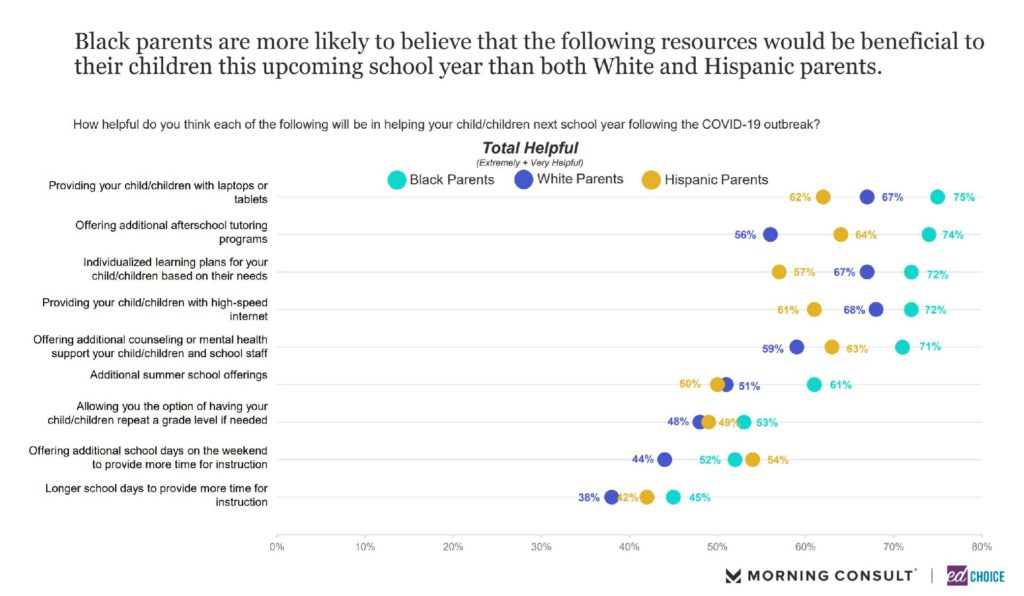
4. Black parents are nearly as likely to prefer school to take place completely at home as they are to prefer schooling completely outside the home. Twenty-six percent of Black parents indicated they would most prefer their children to be educated completely at home, while 28 percent most preferred schooling to be entirely outside the home. Nearly half (46%) of Black parents prefer some mixture of at-home and out-of-home education.
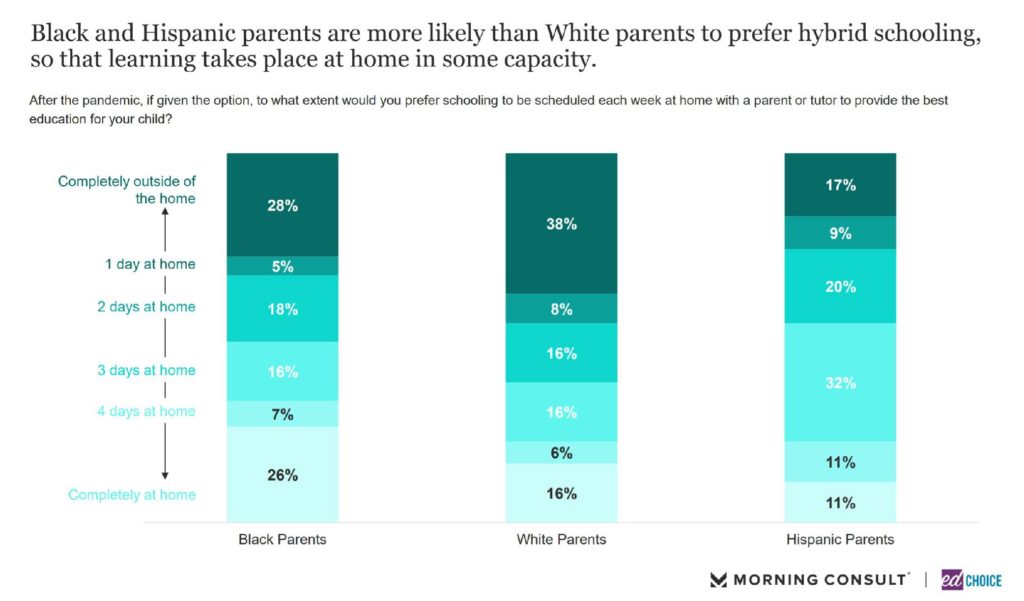
5. At the end of the school year, Black parents were more likely than white parents to express interest in seeking a tutor for their child. Seventeen percent of Black parents say at least one of their children currently is receiving tutoring services. Another 17 percent are actively looking for tutoring for their children, while another 21 percent say they plan to look for a tutor for their child. In comparison, 20 percent of white parents say at least one of their children are receiving tutoring. Just 9 percent are actively looking for a tutor and 13 percent plan to find one.
